The given graph represents the variation of Z (compressibility factor =PVnRT) versus P, for three real gases A,B and C. Identify the only incorrect statement.
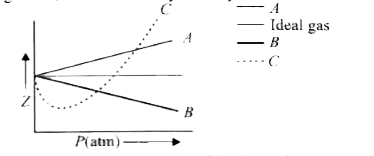
For the gas A,a=0 and its dependence on P is linear at all pressures
For the gas B, b=0 and its dependence on P is linear at all pressures.
For the gas C, which is typical real gas for which neither a=0 nor b=0. By knowing the minima and the point of intersection, with Z=1, a and b can be calculated.
At high pressure, the slope is positive for all real gases.
Vander Waals. equation is
(P+aV2)(V−b)=RT
When a=0,P(V−b)=RT or PV=RT+Pb
i.e. Z=1+PbRT. Thus Z>1 and increases with increase of pressure. Hence a is correct.
When b=0(P+aV2)V=RT or PV+aV=RT
i.e. Z=1−aRTV. Thus Z<1 and decreases with increase of pressure.Hence b is correct.
Statement d is also correct.
Topper's Solved these Questions
- STATES OF MATTER (SOLIDS, LIQUIDS AND GASES)BOOK - MTG-WBJEECHAPTER - STATES OF MATTER (SOLIDS, LIQUIDS AND GASES)EXERCISE - WBJEE/WORKOUT (Category 3: One or More than one Option Correct Type)
9 Videos
- STATES OF MATTER (SOLIDS, LIQUIDS AND GASES)BOOK - MTG-WBJEECHAPTER - STATES OF MATTER (SOLIDS, LIQUIDS AND GASES)EXERCISE - WB JEE Previous Years Questions (Category 1: Single Option Correct Type)
14 Videos
- STATES OF MATTER (SOLIDS, LIQUIDS AND GASES)BOOK - MTG-WBJEECHAPTER - STATES OF MATTER (SOLIDS, LIQUIDS AND GASES)EXERCISE - WB JEE Previous Years Questions (CATEGORY 3; ONE OR MORE THAN ONE OPTION CORRECT TYPE(
1 Videos
- REDOX EQUILIBRIABOOK - MTG-WBJEECHAPTER - REDOX EQUILIBRIAEXERCISE - WB JEE PREVIOUS YEARS QUESTIONS
5 Videos
- SURFACE CHEMISTRYBOOK - MTG-WBJEECHAPTER - SURFACE CHEMISTRYEXERCISE - WB JEE PREVIOUS YEARS QUESTIONS
3 Videos
Similar Questions
The given graph represents the variations of compressibility factor Z=PV/nRT vs P for three real gases A, B, and C.

Identify the incorrect statements.
View SolutionThe given graph represents the variations of compressibility factor Z=pv/nRT vs P for three real gases Which of the following statements is wrong?
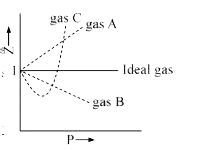
View Solution
Knowledge Check
The given graph represents the variations of compressibility factor Z=PV/nRT vs P for three real gases A, B, and C.

Identify the incorrect statements.AFor gas A, a=0 and its dependence on p is linear at all pressures.BFor gas B, b=0 and its dependence on p is linear at all pressures.CFor gas C, which is a typical real gas, neither a nor b=0. By knowing the minima and power of intersection with Z=1, a and b can be calculated.DAt high pressure, the slope is positive for all real gases.Which of the following represents a plot of compressibility factor (Z) versus P at room temperature for helium?
A B
B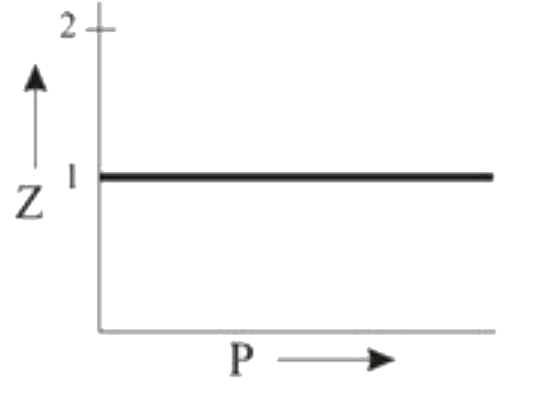 C
C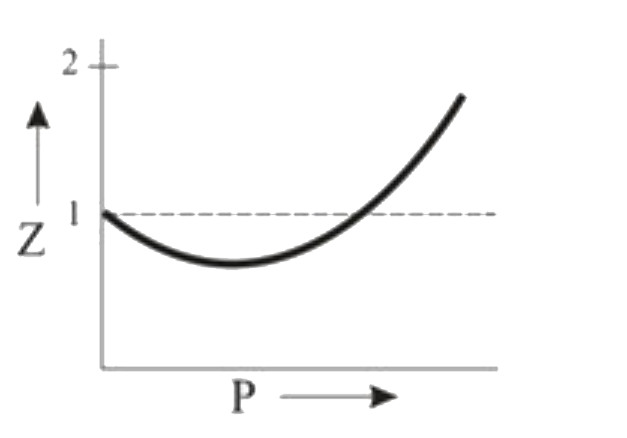 D
D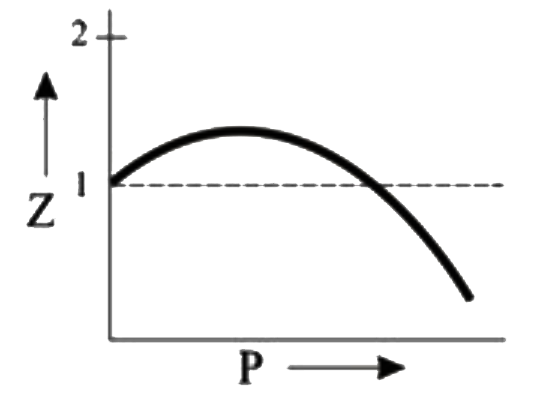
Compressibility factor of a gas is given by the equation Z=PVnRT. On this basis , mark the correct statement.
AWhen Z>l, real gases get compressed easilyBWhen Z=I, real gases get compressed easilyCWhen Z>l, real gases are difficult to compressDWhen Z=l, real gases are difficult to compress
The given graph represents the variations of compressibility factor Z=pv/nRT vs P for three real gases Which of the following statements is wrong?

View SolutionWhich of the following represents a plot of compressibility factor (Z) versus P at room temperature for helium?
View SolutionThe graphs in Fig shown the variation of the product PV with respect to the pressure (P) of given masses of three gases, A, B and C. The temperature is kept constant. State with proper arguments which of these gases is ideal.
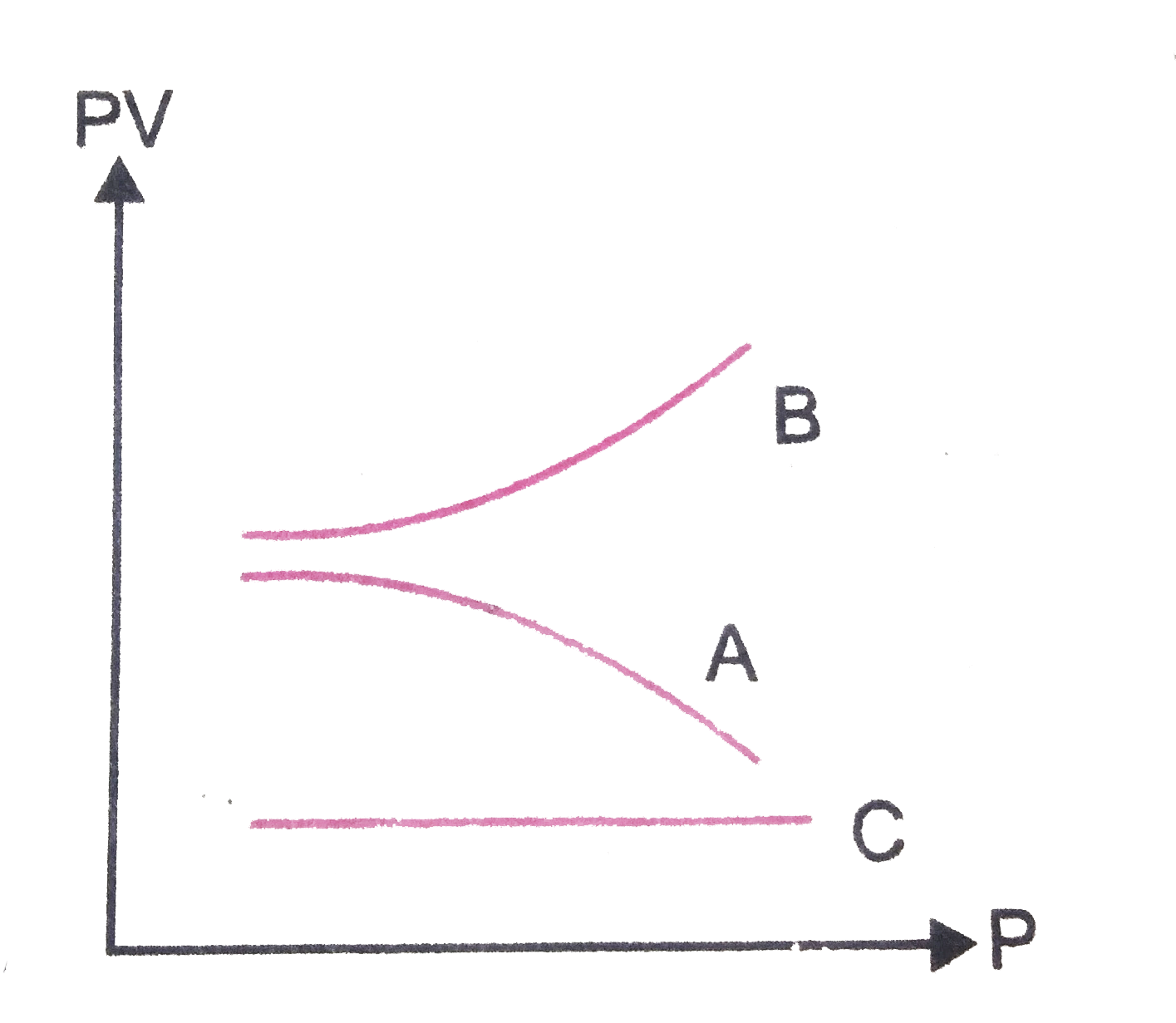
View SolutionCompressibility factor of a gas is given by the equation Z=PVnRT. On this basis , mark the correct statement.
View SolutionThe gases which strictly follow the general equation (PV=nRT) are called ideal or perfect gases. Actually, there is no gas which is perfect or ideal. A real gas is one which actually exists, whether it obeys gas laws strictly or not. Under ordinary conditions, only those gases nearly behave as ideal or perfect which have very low boiling points such as nitrogen, hydrogen ect. The most easily liquefiable and highly soluble gases such as ammonia, carbon dioxide, sulphur dioxide show large deviation
A very convenient method of studying deviation of real gases from ideal behaviour is through a compressibility factor (Z)
Z=PVnRT
(i) Z=1, for ideal gases.
(ii) Z≠1, for real gases.
Consider the equation Z=PVnRT, which of the following statements is correct ?
View Solution
